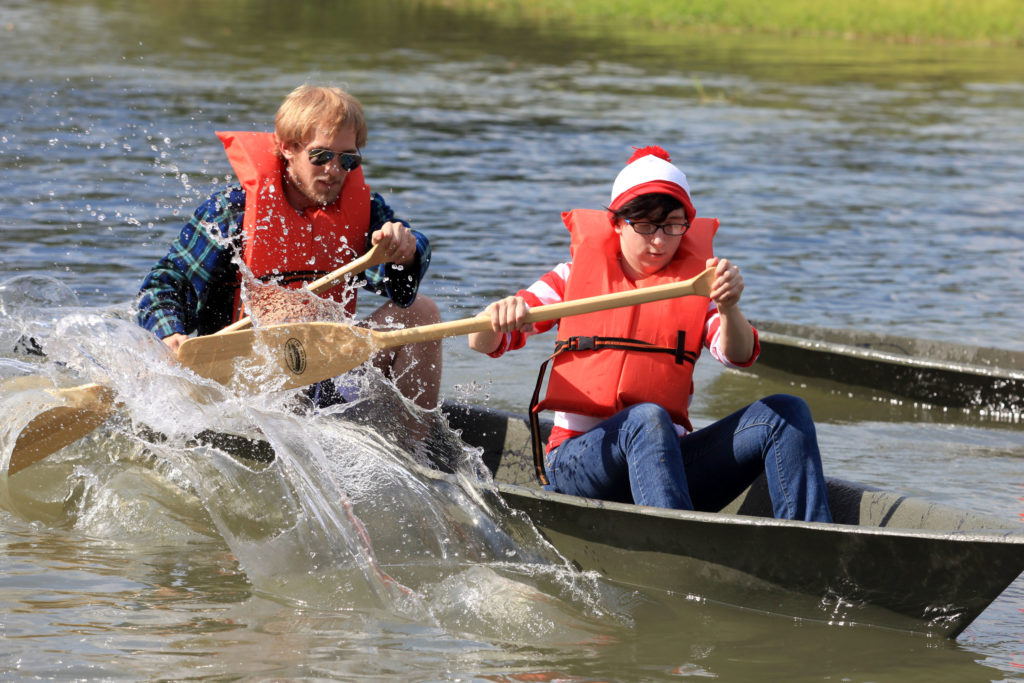It was an unfamiliar experience for four international members of the men’s and women’s basketball teams when Hurricane Katrina struck the Gulf Coast nearly a month ago. Guard Michael Czepil, center Mitch Boyce and guard/forward Ryan Bathie-all freshmen on the men’s basketball team from Australia-and freshman center Christine Lovell-a member of the women’s squad from Toronto, Canada-had never experienced a hurricane before.
The closest thing the men’s basketball players could compare to a hurricane in Australia was a cyclone. They said that was not even as bad as a hurricane. Boyce said during a cyclone, people go inland.
“It’s probably like they (cyclones) come on the shore and take out houses but nothing like a hurricane does,” Boyce said. “They can do some damage. The more powerful ones can take out a building.”
Lovell said floods, hurricanes or tornadoes are never present in Toronto.
“We get really bad snowstorms,” Lovell said. “(The) power goes out, trees fall, but it’s cold up there. That’s normal. Nothing is really comparable to a hurricane. It’s a totally different thing.”
The only foreign member of either squad who had ever had any first-hand experience with a hurricane was junior guard/forward Stefan Blaszczynski, also a native of Australia, who had been through both Hurricanes Ivan and Katrina.
Blaszczynski, Bathie and Czepil along with a group of current men’s and women’s basketball players evacuated to Sulphur where they stayed at the home of sophomore guard Claire Barry of the women’s squad. The group left the Saturday before the hurricane and did not return to campus until the following Sunday.
Blaszczynski said that when he called his mom to inform her he was evacuating, she was not too worried because he had already been through Ivan, but when she saw footage on the news, she became concerned.
Bathie said he did not believe the storm would hit Thibodaux so he had planned to stay in La Maison du Bayou. When the University made an announcement concerning the storm, he immediately left.
Thinking he was only going to be gone for two days, Bathie packed two-days’ worth of clothes. He and his teammates had to come back to campus to pick up some additional things during the middle of the week. When he returned to campus, Bathie was surprised there was not more damage to Thibodaux.
“I thought it would be worse being so close to New Orleans, but it was still pretty bad,” Bathie said. “(It was) nothing I’ve ever seen before.”
While his teammates went to Sulphur, Boyce went to Malakoff, Texas, to stay at the home of sophomore center Tarin Seely of the women’s squad. He left campus the Saturday before the storm hit when the coaches informed him he had to leave as quickly as he could.
Initially, Boyce was not worried about the storm.
“Before the storm, I wasn’t too worried because where I come from, we get cyclones, but once I got to Texas and saw how big it got, I started to get worried,” Boyce said. “After it hit it was unbelievable.”
Along with his stay at Seely’s home, Boyce went to visit his aunt in Dallas for two days before returning to campus on Sept. 4.
Lovell left on a bus out of New Orleans for Atlanta where she flew back home to Toronto. Head women’s basketball coach Mark Cook said Lovell returned to campus on the Saturday following the start of school. She returned late because of the prices of the tickets.
Lovell said it was frightening to see how Katrina impacted homeless people and how it could have affected her.
“It was scary to see that and know that I could be in there,” Lovell said. “It didn’t hit here, but it hit New Orleans.”
She said her parents were glad she came home and were a little apprehensive in allowing her to return. She said the coaches told her it was safe in Thibodaux and everything would be okay. She also said the presence of the National Guard helped because it made her feel better protected.
All of the men’s basketball players were able to contact their parents before and after Katrina made landfall.
Cook, who served in capacities as both an assistant men’s basketball coach and head women’s basketball coach during his 10-year tenure at Dillard University in New Orleans, sold his home in east New Orleans in December. From what he could see on satellite photos, he said water was present in his former neighborhood.
“I looked at the street (he lived on) because it’s a satellite photo, and you couldn’t zoom in to any house, per se,” Cook said. “I just saw the water on the street. On the satellite photo, they estimated what the water was, and they said two feet.”
Cook said a dorm caught fire at Dillard, which is located in the lowest point of the “bowl” in New Orleans. He said the Gentilly area of New Orleans was under water two weeks ago.
“I can imagine how much water damage (there is) because just when there is a torrential amount of rain, there’s water in the back of campus,” Cook said.







